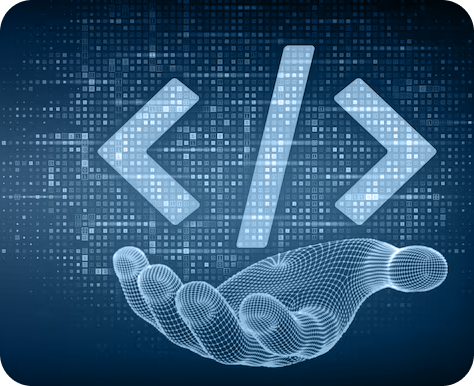How to Create an ERC 721C Contract

6th May 2024

8 min read


6th May 2024

8 min read

In the world of blockchain and cryptocurrency, creativity knows no limitations. From decentralized finance (DeFi) to non-fungible tokens (NFTs), the possibilities appear limitless. Among these ground-breaking innovations is the ERC-721 standard, which has transformed the concept of digital ownership and scarcity. Enter ERC-721C, an advancement in token standards for Ethereum blockchain development that aims to empower both creators and collectors.
ERC-721C is a modification of the ERC-721 standard, which specifies the rules for establishing non-fungible tokens on the Ethereum network. Non-fungible tokens, as as compared to fungible tokens like bitcoins, are one-of-a-kind assets that cannot be duplicated. ERC-721C adds new functionality and features, giving creators greater flexibility and control over their digital assets.
You may also like | Understanding ERC-404 | The Unofficial Token Standard
While the original ERC-721 standard provided the way for the NFT revolution, ERC-721C expands on it by resolving some of its limitations and improving its capabilities. Here's why artists and developers are using ERC-721C:
ERC-721C enables creators to integrate royalty mechanisms directly into their tokens, ensuring that they earn a percentage of the proceeds when their assets are sold on the secondary market. This feature allows creators to generate passive money from their work, resulting in a more sustainable ecology for digital art and collectibles.
With ERC-721C, token holders can divide ownership of a digital asset into numerous shares, letting many people to own fractions of the asset. This creates new opportunities for crowdfunding, investing, and shared ownership models, democratizing access to high-value assets and allowing stakeholders to collaborate.
Unlike standard NFTs, which store metadata off-chain and are immutable once created, ERC-721C tokens enable dynamic metadata updates. This means that creators can change the qualities and properties of their tokens even after they've been created, allowing for real-time changes, modification, and interactions.
ERC-721C coins are fully able to work with the existing ERC-721 infrastructure, allowing for smooth interaction with NFT marketplaces, wallets, and decentralized apps. This interoperability increases the liquidity and usability of ERC-721C tokens, making them available to a wider range of collectors and enthusiasts.
Also, Explore | ERC-721 Non-Fungible Token Standard Development
// SPDX-License-Identifier: MIT
pragma solidity ^0.8.0;
import "@openzeppelin/contracts/token/ERC721/extensions/ERC721Enumerable.sol";
import "@openzeppelin/contracts/access/Ownable.sol";
contract MyERC721 is ERC721Enumerable, Ownable {
// Token name and symbol
string private _name;
string private _symbol;
// Base URI for metadata
string private _baseURI;
// Mapping from token ID to metadata URI
mapping(uint256 => string) private _tokenURIs;
// Constructor
constructor(string memory name_, string memory symbol_, string memory baseURI_) ERC721(name_, symbol_) {
_name = name_;
_symbol = symbol_;
_baseURI = baseURI_;
}
// Mint new token
function mint(address to, uint256 tokenId, string memory tokenURI) external onlyOwner {
_mint(to, tokenId);
_setTokenURI(tokenId, tokenURI);
}
// Override base URI
function _baseURI() internal view virtual override returns (string memory) {
return _baseURI;
}
// Set token URI
function _setTokenURI(uint256 tokenId, string memory tokenURI) internal virtual {
require(_exists(tokenId), "ERC721Metadata: URI set of nonexistent token");
_tokenURIs[tokenId] = tokenURI;
}
// Get token URI
function tokenURI(uint256 tokenId) public view virtual override returns (string memory) {
require(_exists(tokenId), "ERC721Metadata: URI query for nonexistent token");
string memory _tokenURI = _tokenURIs[tokenId];
string memory base = _baseURI();
if (bytes(base).length == 0) {
return _tokenURI;
}
if (bytes(_tokenURI).length > 0) {
return string(abi.encodePacked(base, _tokenURI));
}
return super.tokenURI(tokenId);
}
// Burn token
function burn(uint256 tokenId) external {
require(_isApprovedOrOwner(_msgSender(), tokenId), "ERC721Burnable: caller is not owner nor approved");
_burn(tokenId);
}
}Also, Read | ERC-20 vs BRC-20 Token Standards | A Comparative Analysis
ERC-721C is the next level of NFT innovation, giving creators unprecedented control and flexibility over their digital assets. ERC-721C empowers artists by exploiting features such as customizable royalties, fractional ownership, dynamic metadata, and interoperability to open new income opportunities, communicate with their fans, and define the future of digital ownership. If you are interested in developing an ERC 721 C contract for your business idea, connect with our skilled Ethereum Blockchain developers.
